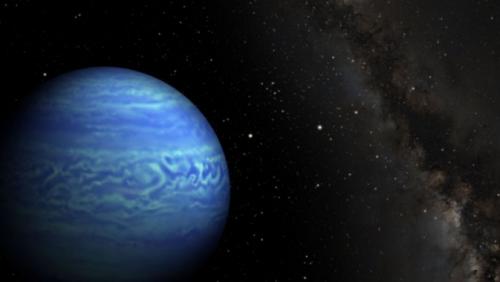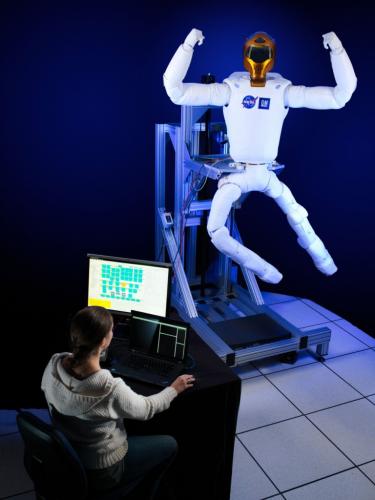Science
Brain tumor cells penetrated by tiny, degradable particles carrying genetic instructions: Work in mice advances potential for nanoparticles to treat brain cancer

Biodegradable plastic molecules (orange) self-assemble with DNA molecules (intertwined, black circles) to form tiny nanoparticles that can carry genes to cancer cells.
- Read more
- 440 reads
Graphene only as strong as weakest link: Rice, Georgia Tech experiments determine real-world limits of two-dimensional carbon

An electron microscope image shows a pre-crack in a suspended sheet of graphene used to measure the overall strength of the sheet in a test at Rice University. Rice and Georgia Tech scientists performed experiments and theoretical calculations and found that graphene, largely touted for its superior physical strength, is only as strong as its weakest point.
- Read more
- 406 reads
Well-behaved, Young Galaxy Surprises Astronomers

The young galaxy SDSS090122.37+181432.3, also known as S0901, is seen here as the bright arc to the left of the central bright galaxy.
- Read more
- 332 reads
Target on Mars Looks Good for NASA Rover Drilling

This two-step animation shows before and after views of a patch of sandstone scrubbed with the Dust Removal Tool, a wire-bristle brush, on NASA's Curiosity Mars rover. Both images were taken April 26, 2014, by the Mars Hand Lens Imager on Curiosity's arm. The target rock is called "Windjana."
- Read more
- 322 reads
Stanford scientists create circuit board modeled on the human brain

The Neurogrid circuit board can simulate orders of magnitude more neurons and synapses than other brain mimics on the power it takes to run a tablet computer.
- Read more
- 420 reads
Fluorescent-based tool reveals how medical nanoparticles biodegrade in real time: May inform development of versatile drug carriers for therapeutic uses in patients

Nanoparticle disassembly causes a shift in the fluorescence pattern.
- Read more
- 436 reads
NASA Seeks External Concepts for Mission to Oceanic Jovian Moon

This image shows two views of the trailing hemisphere of Jupiter's ice-covered satellite, Europa. The left image shows the approximate natural color appearance of Europa. The image on the right is a false-color composite version combining violet, green and infrared images to enhance color differences in the predominantly water-ice crust of Europa.
- Read more
- 347 reads
NASA Puzzles Out Ozone's Ups and Downs

Astronauts aboard the International Space Station captured this photograph of Earth's atmospheric layers on July 31, 2011, revealing the troposphere (orange-red) to the stratosphere and above. Earth-observing instruments in space allow scientists to better understand the chemistry and dynamics occurring within and between these layers.
- Read more
- 340 reads
NASA's Spitzer and WISE Telescopes Find Close, Cold Neighbor of Sun

This artist's conception shows the object named WISE J085510.83-071442.5, the coldest known brown dwarf. This cool star-like body is as frosty as the North Pole (or between minus 54 and 9 degrees Fahrenheit). It is also the fourth closest system to our sun, at 7.2 light-years from Earth.
- Read more
- 345 reads
Human Rights
Fostering a More Humane World: The 28th Eurasian Economic Summi

Conscience, Hope, and Action: Keys to Global Peace and Sustainability

Ringing FOWPAL’s Peace Bell for the World:Nobel Peace Prize Laureates’ Visions and Actions

Protecting the World’s Cultural Diversity for a Sustainable Future

Puppet Show I International Friendship Day 2020


